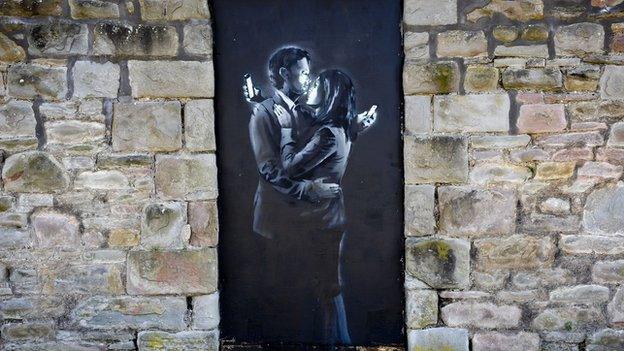Who is Banksy? Everything we know about the anonymous artist
- Published
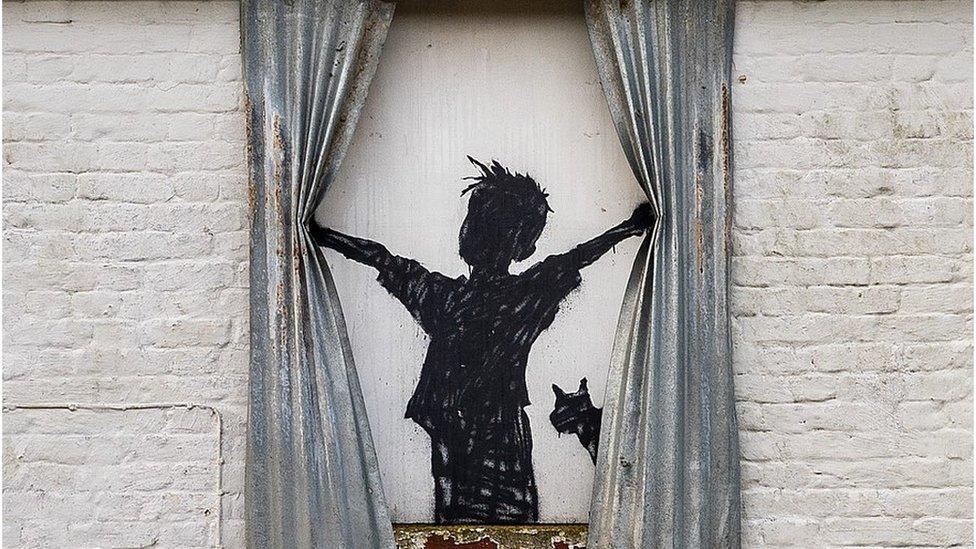
Last March, a Banksy mural entitled Morning is Broken appeared on the side of a derelict farmhouse in Kent - but the building, and artwork, were later demolished
Who is Banksy?
He's one of the world's most famous artists, but despite his global following, his identity remains, officially at least, unknown.
Often described as "elusive" and "secretive" by the press, the "guerrilla street artist" counts A-list celebrities, such as actor Brad Pitt, among his fans and collectors.
A hero to some, a vandal to others, his artworks sell for eye-watering sums, with councils and landowners rushing to profit from - or whitewash - buildings chosen as his latest canvas.
And yet, the self-styled prankster and anti-establishment figure has consistently managed to remain anonymous.
So what do we actually know about him?
Early career
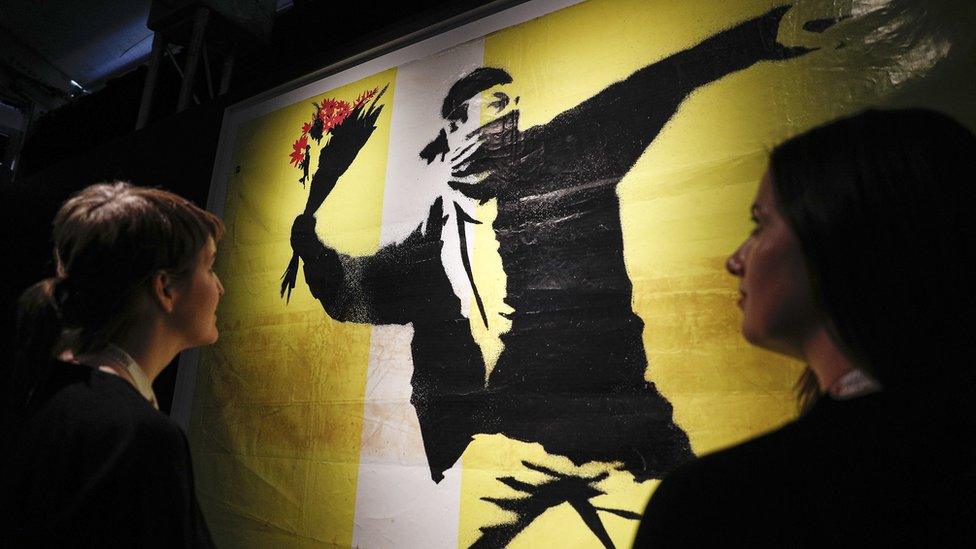
Banksy has become one of the world's most famous artists
Banksy rose to prominence after he began spray-painting his now-trademark stencilled designs around Bristol in the early 1990s.
The city's influential music and arts scene - home of bands such as Massive Attack and Portishead - is said to have inspired his work.
Banksy himself is believed to have been born in the nearby town of Yate, in South Gloucestershire, in the early 1970s.
His first large stencil mural - The Mild Mild West - which depicts a teddy bear throwing a Molotov cocktail at three riot police, was painted in the Stokes Croft area of Bristol in 1999.
In the early 2000s, he moved to London and continued to attract attention with his satirical street art.
Laughing all the way to the Bank(sy)
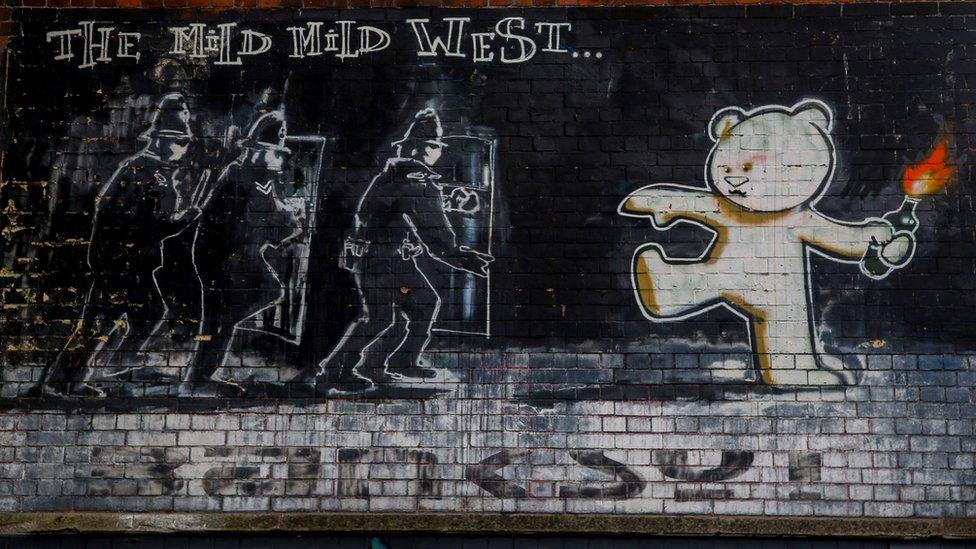
The Mild Mild West was Banksy's first large stencil mural
By the mid 2000s, Banksy was becoming a celebrity himself - albeit an anonymous one. Simultaneously, his works became more ambitious, popping up in cities all over the world.
The appearance of a new Banksy soon started to become a media event. His mythical status as the masked artist poking fun at authority brought him - or at least his brand - international recognition.
Exhibitions of his work, in cities including Los Angeles and London, became sell-out events. His often politically-charged works began to sell for huge amounts of money, with customers including Pitt, Paul Smith and Christina Aguilera.
In 2009, his Banksy v Bristol Museum show, external drew enormous crowds. Sticking to his roots, in 2015, his Dismaland exhibition took over a derelict seafront lido in Weston-super-Mare.
A 2010 documentary film Exit Through The Gift Shop - showing Banksy at work - was nominated for an Academy Award and a Bafta.
And in 2018, in a highly theatrical piece of performance art, he staged a live destruction of his stencil Girl with Balloon at Sotheby's auction house - moments after it was sold for £1m.

Banksy's Girl with Balloon was shredded seconds after the hammer fell at an auction at Sotheby's in October 2018
Banksy unmasked?
A number of names have been linked with Banksy in the past: Robert Del Naja, Robin Gunningham, Art Attack's Neil Buchanan or a Bristol art collective.
In what it declared to be a world exclusive,, external The Mail on Sunday unveiled Banksy as Mr Gunningham, "a former public schoolboy brought up in middle-class suburbia".
Compounding this theory, last year the BBC unearthed an interview in which the artist appears to confirm his first name as "Robbie".
In the 2003 recording, BBC reporter Nigel Wrench asks him if he is called "Robert Banks", and the artist replies: "It's Robbie." The full interview can be heard on BBC Sounds as Radio 4's The Banksy Story.
Mr Gunningham has never commented on the speculation.

A photograph by Banksy's former agent is said to show the artist at work
A book of photos released by Banksy's former agent, Steve Lazarides, claims to show the artist at work, although none of the images showed his face. But it prompted yet more speculation - and intrepid photographers, both amateur and professional, trying to capture him on film.
Robert Del Naja, of Bristol trip hop group Massive Attack, has also been linked to the artist. The vocalist, better known as 3D, has denied this, although he claimed to know the identity of the real Banksy, referring to him as a friend.
Could that friend be Neil Buchanan, host of ITV show Art Attack?
Buchanan was forced to deny any links to Banksy after a suggestion that he was the face behind the spray cans spread on social media.
Another possibility is that Banksy is actually not one person, but many - operating as an art collective.
Of course, all of the above could be false trails, in the hope of throwing the wider media off the scent.
Banksy's notoriously tight-lipped PR reps refuse to be drawn on his identity. And those in the know are keeping shtum.
Canned messages
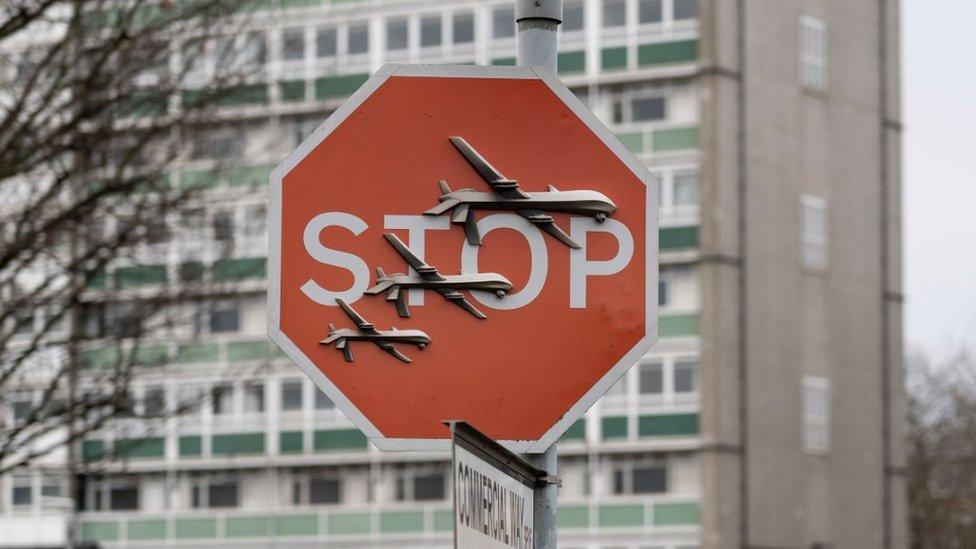
This work was installed on a stop sign near Commercial Way in south London
As the artist - presumably - moves into middle age, his prolific creative output continues, if anything with works that are more outspoken and political than earlier pieces.
The war in Ukraine, where a Banksy appeared in November 2022, and immigration are just two of the issues recently embraced by the artist.
With fame have come imitators, and thefts.
Disputed works are common - with only the genuine Banksy pieces legitimised on his Instagram account, external.
In December, two men were arrested in London on suspicion of theft and criminal damage after a Banksy artwork in south London - a red stop sign featuring three military drones - was removed.
Most recently, he confirmed that he was behind a mural in north London featuring green spray paint made to look like the foliage of a heavily pruned tree in the foreground - which has been interpreted, by some, as a comment on the environment.
Not all his work is overtly political, though many having a comic, or sardonic, message about society.
In 2021, 10 pieces of street art appeared across Suffolk and Norfolk. The "Great British Spraycation" street art included seagulls dive-bombing for chips, children playing with sand and in boats, as well as a rat leaning back in a deckchair while enjoying a cocktail.
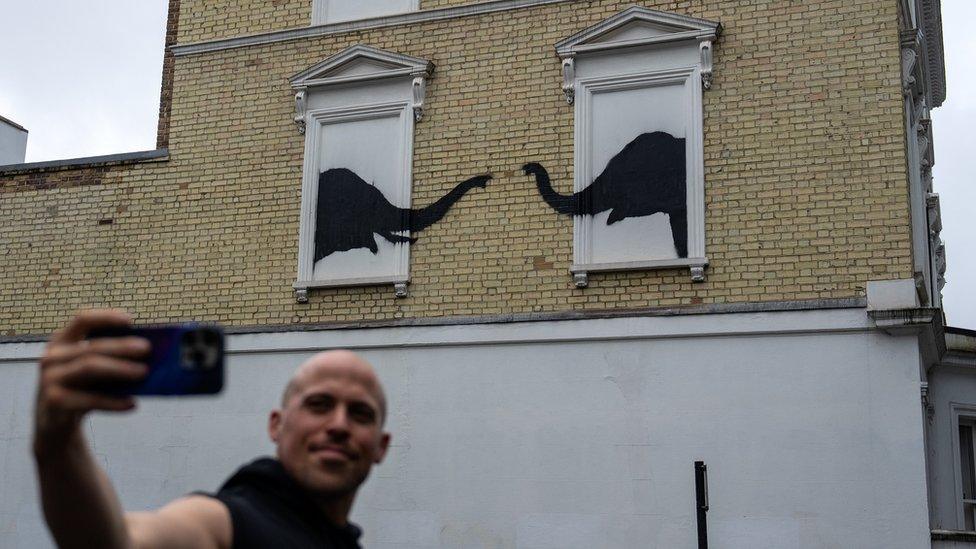
These elephants were part of a series of five wildlife-themed artworks created by Banksy in London
In the summer of 2024, Banksy wildlife artworks appeared in London - with eight revealed over as many days.
The series began with a goat "perching" on a building in Kew, followed by two elephants reaching their trunks towards each other in Chelsea.
Next came three monkeys hanging on a bridge in Brick Lane, and then a howling wolf painted on a satellite dish in Peckham.
The fifth artwork was a pair of pelicans above a fish and chip shop in Walthamstow.
That was followed by a stencil of a stretching cat on an abandoned billboard in Cricklewood.
The public then flooded in to see the swimming piranhas, which appeared on the side of a City of London Police sentry box.
Banksy completed his urban jungle with a rhino mounting a Nissan Micra which had a traffic cone on its bonnet.
As is often the case, not all the art survived intact.
The elephants were soon defaced with stripes, the wolf appeared to be stolen within hours of being confirmed as a Banksy, the cat was taken down the same day it was revealed, and a masked man spray painted a tag over the rhino.
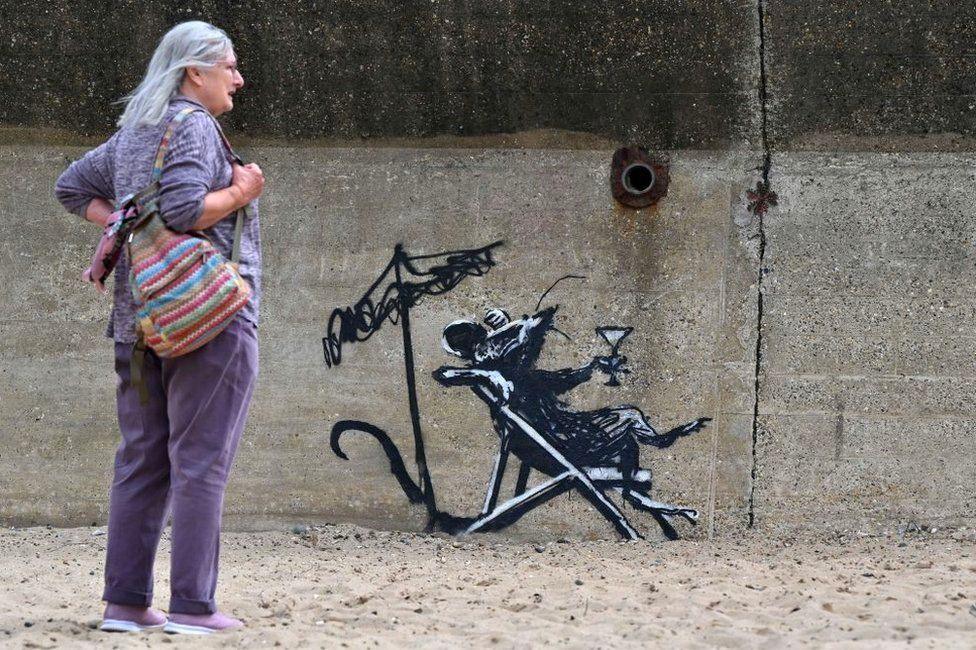
Banksy painted a series of images in coastal East Anglia in 2021
What if he was unmasked?
John Brandler, director of Brandler Art Galleries, believes it is convenient for Banksy to remain anonymous "so he can walk down the street" without being recognised, but says the Banksy brand would survive even if his identity was revealed.
"To the art world it doesn't matter any more. The brand is so big now. His people have made the brand Banksy such an incredible thing, it wouldn't make any difference now [if he was unmasked].
"His statements are so strong. It's brilliant marketing. People are buying by brand.
"[When he started] being anonymous helped him stand out - the masked crusader - but now it doesn't matter any more.
"He's very clever. He hasn't flooded the market. He's a brilliant businessman."

Follow BBC West on Facebook, external, Twitter, external and Instagram, external. Send your story ideas to: bristol@bbc.co.uk , external
- Published10 August 2024
- Published21 November 2023
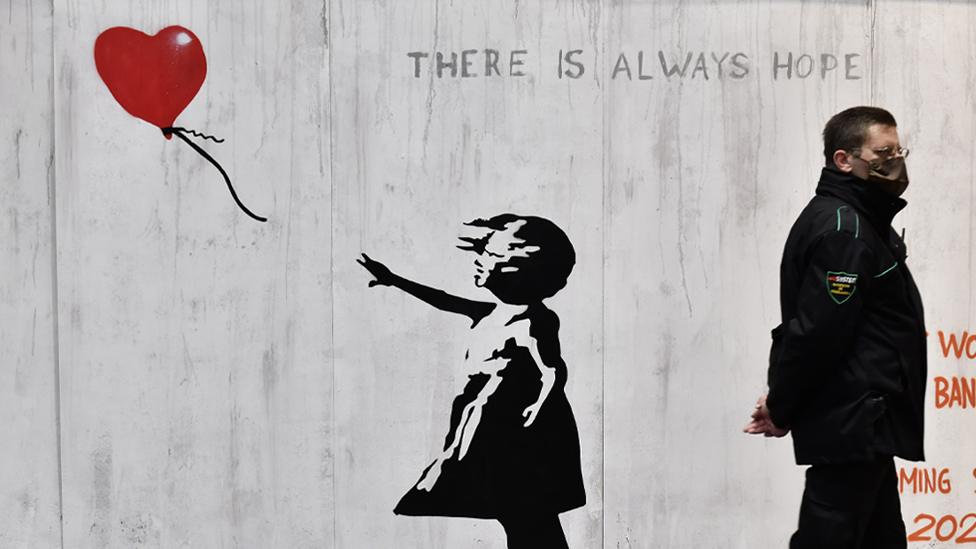
- Published17 July 2023

- Published15 June 2023
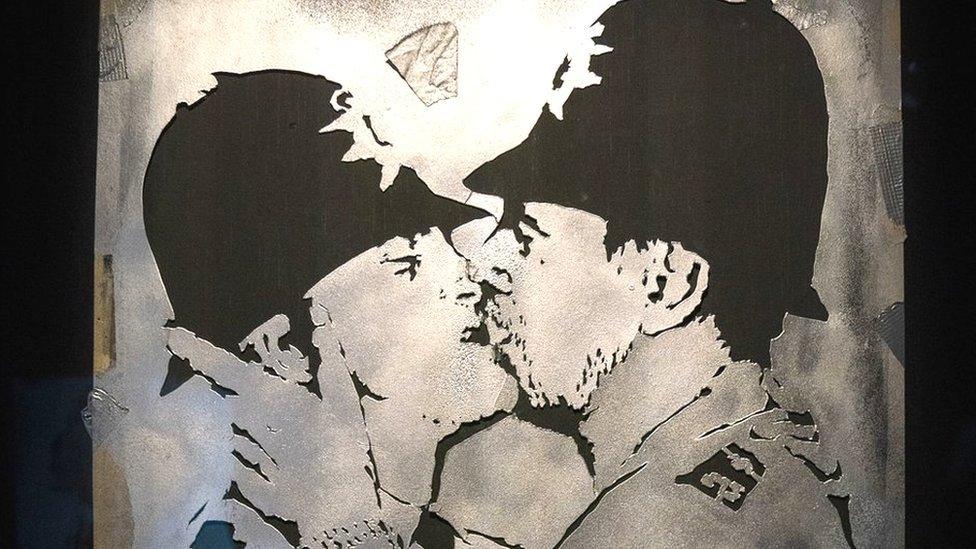
- Published10 December 2019
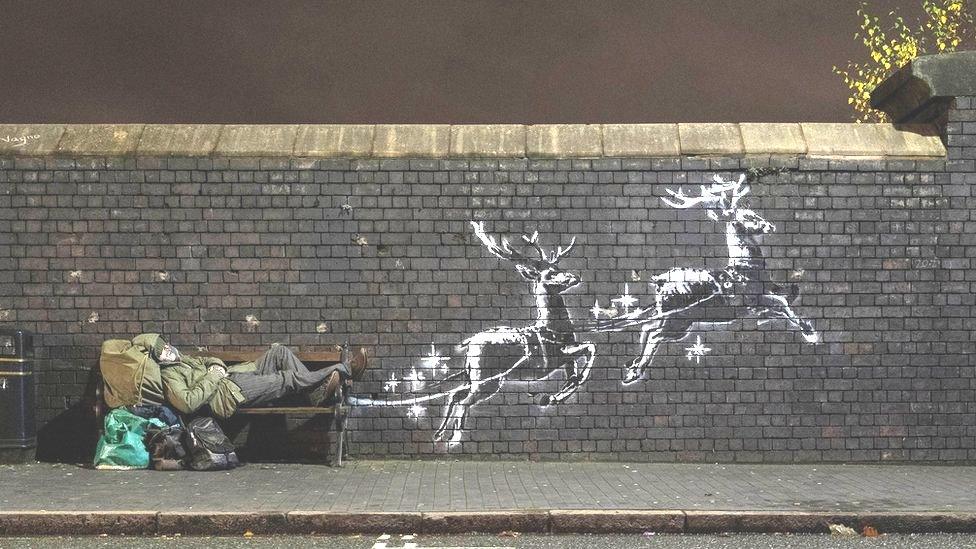
- Published10 December 2019
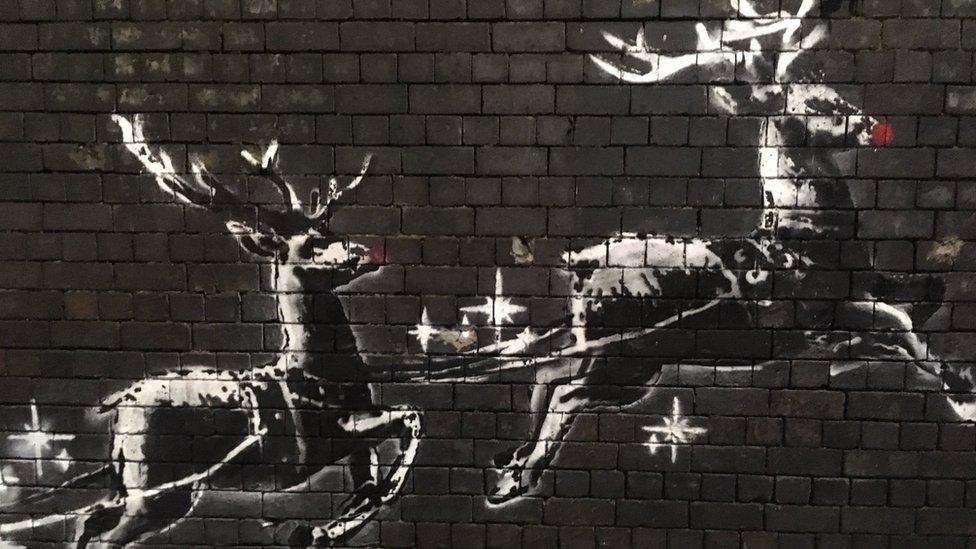
- Published9 December 2019

- Published31 October 2019

- Published17 October 2019
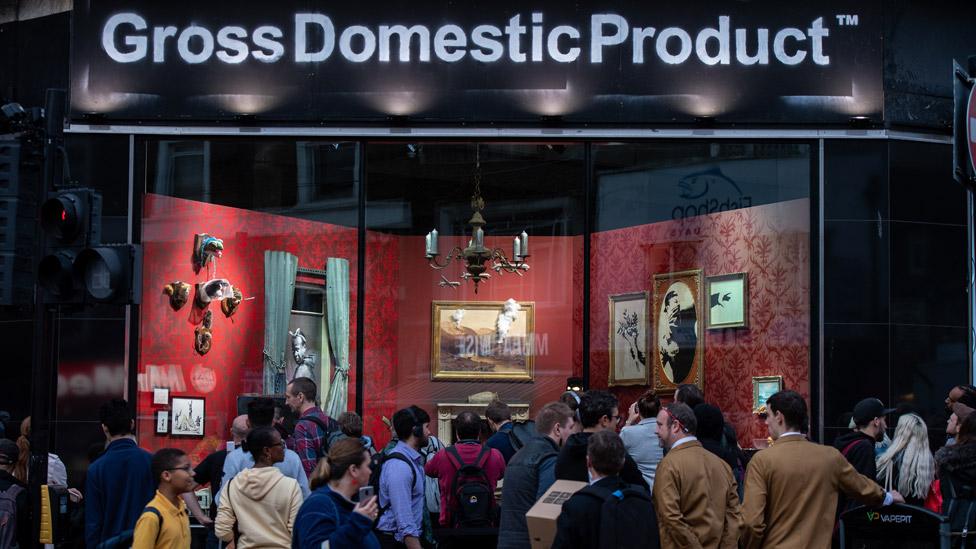
- Published12 September 2019
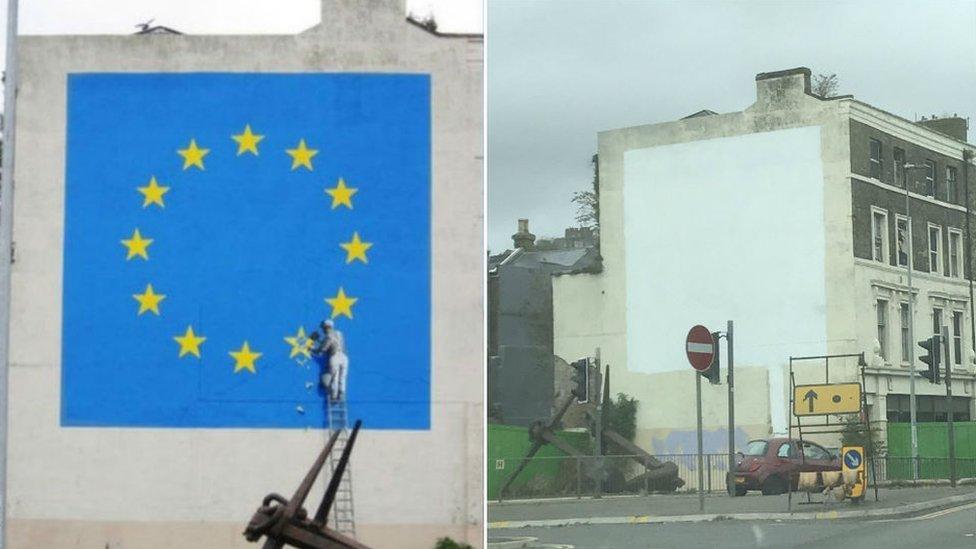
- Published23 May 2019
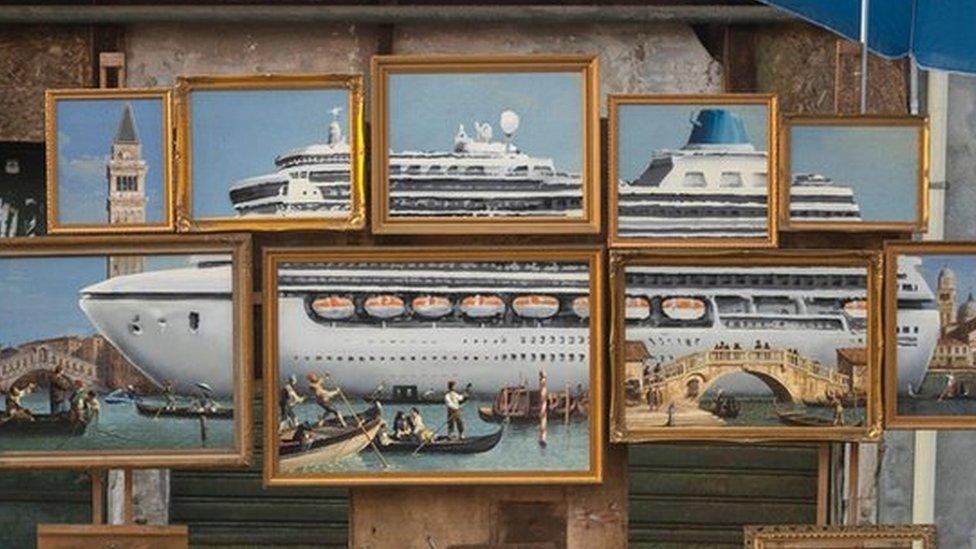
- Published26 April 2019
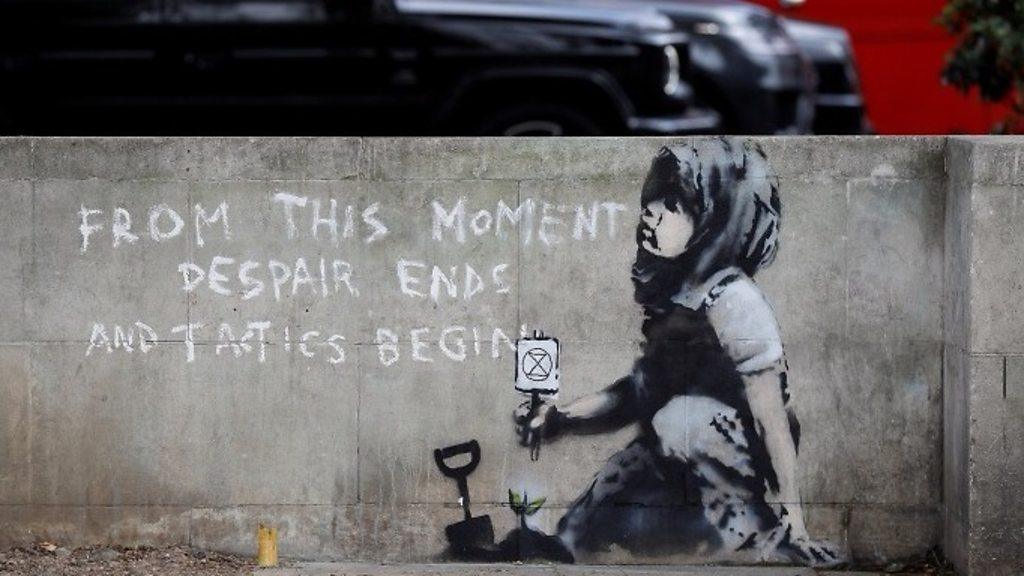
- Published24 February 2020
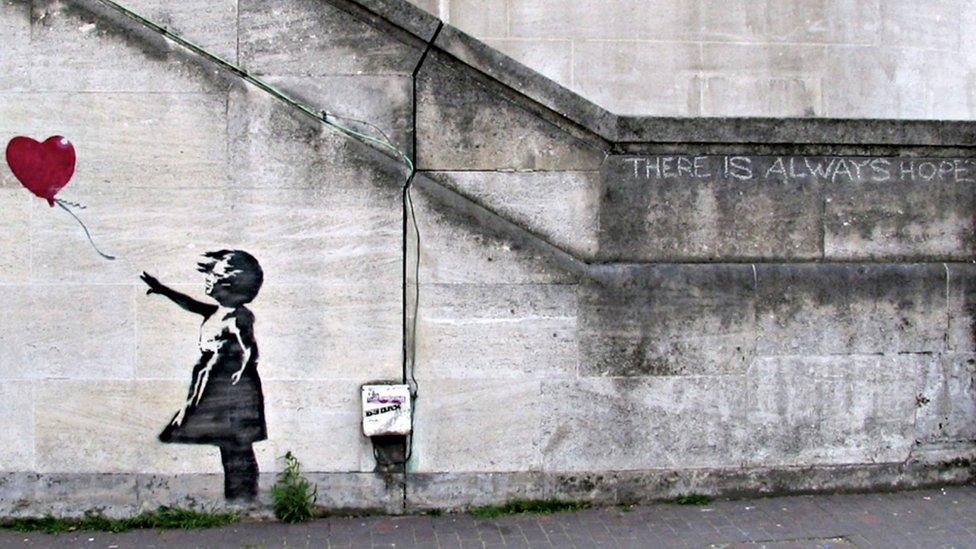
- Published3 March 2016
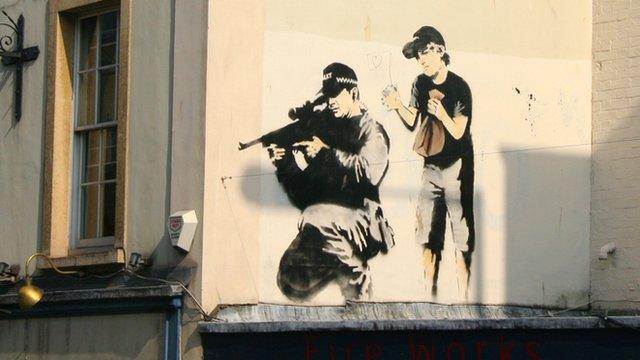
- Published8 January 2016

- Published17 April 2014
